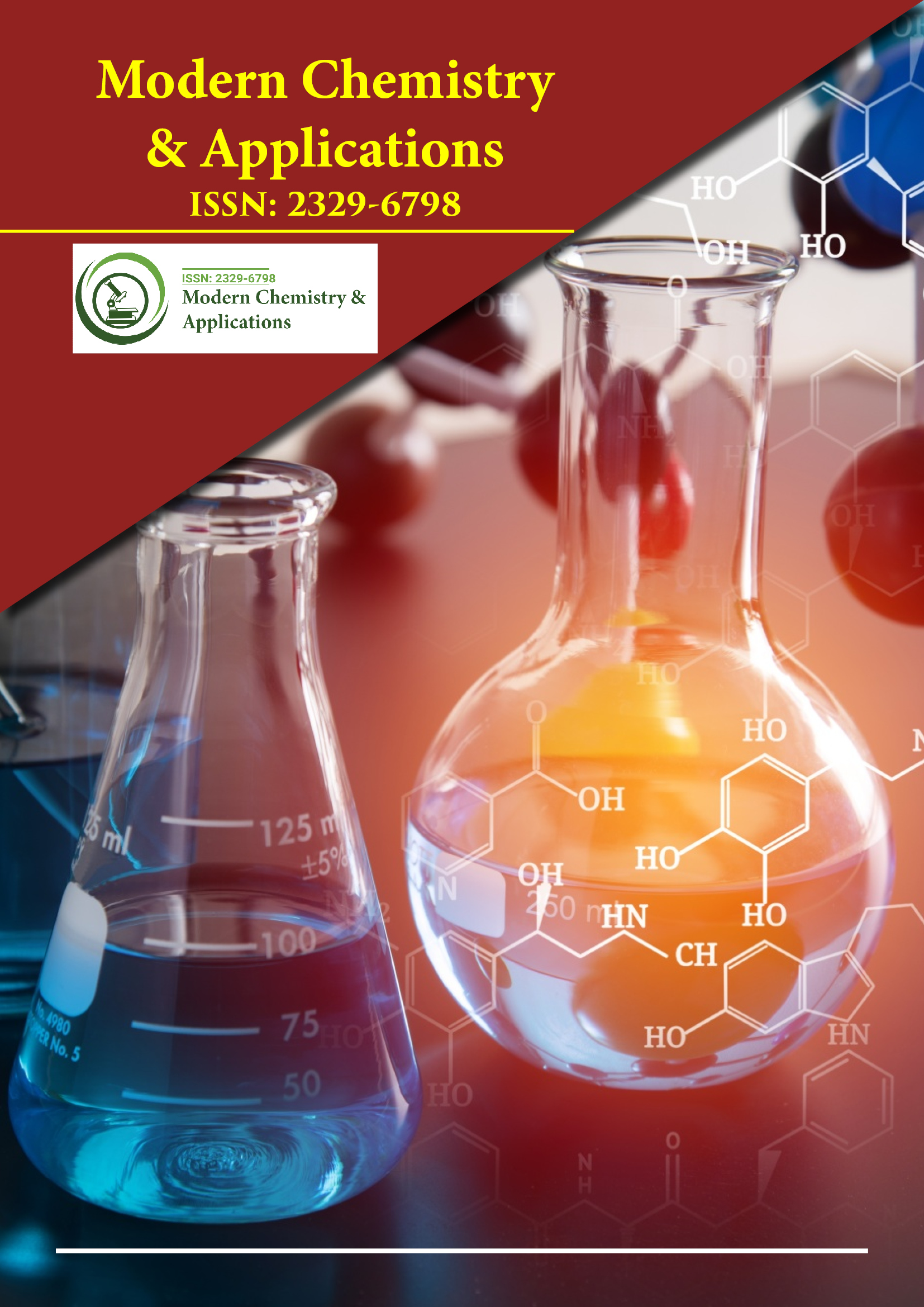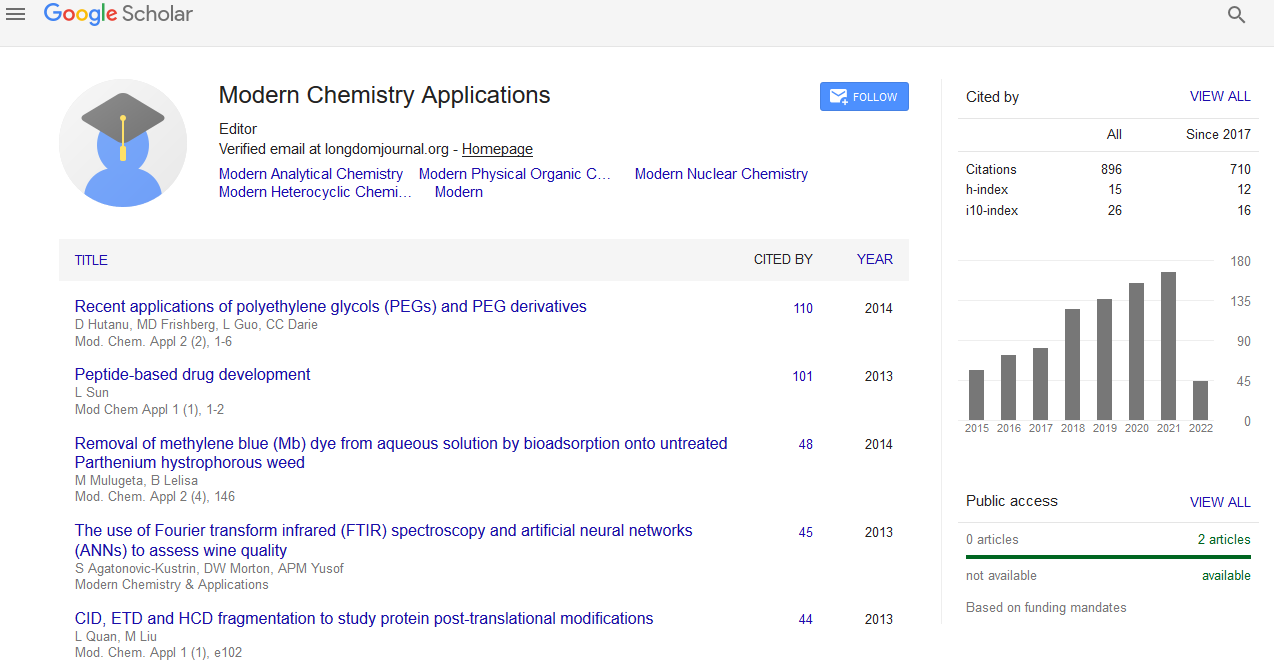Indexed In
- Open J Gate
- JournalTOCs
- RefSeek
- Hamdard University
- EBSCO A-Z
- OCLC- WorldCat
- Scholarsteer
- Publons
- Geneva Foundation for Medical Education and Research
- Google Scholar
Useful Links
Share This Page
Journal Flyer

Open Access Journals
- Agri and Aquaculture
- Biochemistry
- Bioinformatics & Systems Biology
- Business & Management
- Chemistry
- Clinical Sciences
- Engineering
- Food & Nutrition
- General Science
- Genetics & Molecular Biology
- Immunology & Microbiology
- Medical Sciences
- Neuroscience & Psychology
- Nursing & Health Care
- Pharmaceutical Sciences
Nano-TiCl2/cellulose as an eco-friendly and bio-based catalyst for one-pot synthesis of ethyl-2-amino- 4-aryl-4H-chromene-3-carboxylate derivatives
5th Global Chemistry Congress
September 04-06, 2017 | London, UK
Elaheh Akbarzadeh, Bahareh Sadeghi and Elham Arabian
Islamic Azad University, Yazd Branch, Iran
Posters & Accepted Abstracts: Mod Chem Appl
Abstract:
Recently heterogeneous catalysts have attracted paramount importance in many aspects including chemical and energy industries. It is noteworthy to mention that these catalysts are valuable due to their simple handling and storage, easy separation and regenerability. Among these heterogeneous catalysts, polysaccharides especially cellulose has been widely studied as it is the most abundant natural carbon-based biopolymers in the world. It has different fascinating properties including mechanical robustness, biodegradability, hydrophilicity and biocompatibility. Therefore, cellulose has found a wide application in a variety of areas such as pharmacy, agriculture, medical science, industries and so many other related branches.3-5 Also, cellulose susceptible to bond with Lewis acids because of its free OH groups. Hence, with important properties of cellulose in hand and some appealing features of nano-scale materials, chemists can approach to their goal. In recent years, we have been trying to conduct synthetic methodologies under environmentally friendly conditions. In this regard, we have reported convenient procedutres using various efficient nano catalysts.6-8 Based on these achievements and in continuation of our previous experiences, we would like to report nano-TiCl4/cellulose as a bio-based and eco-friendly Lewis acid catalyst for synthesis of ethyl-2-amino-4-aryl-4H-chromene-3-carboxylate derivatives. The catalyst was prepared via reaction of nanocellulose and TiCl4 in dichloromethane as solvent under room temperature conditions. This catalyst has been characterized by fourier transform infrared spectroscopy, field emission scanning electron microscopy, powder X-ray diffraction, energy dispersive X-ray spectroscopy, X-ray fluorescence techniques, and transmission electron microscopy. Nano-TiCl2/cellulose has been shown to effectively promote multi-component synthesis of ethyl-2-amino-4-aryl-4H-chromene-3-carboxylate derivatives by reaction of aldehydes, resorsinol, and ethylcyanoacetate under ethanol reflux. All prepared compounds were characterized with melting points, 1H NMR and 13C NMR. Simple methodology, an eco-friendly catalyst, a clean procedure, easy work-up, and excellent yields are some of the important advantages of this protocol.


